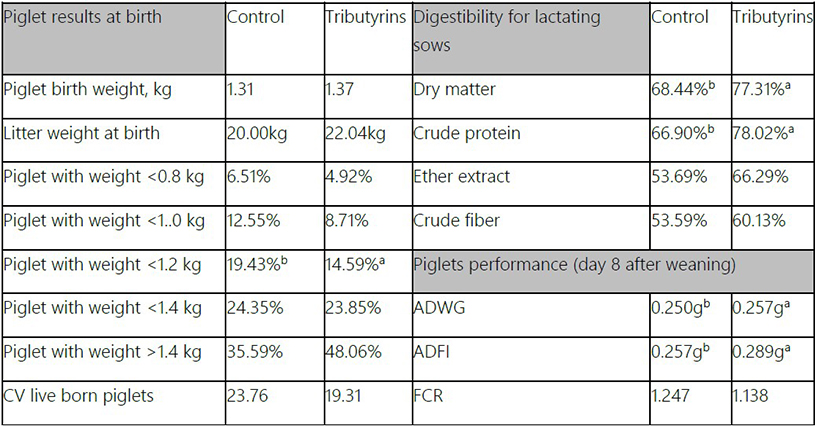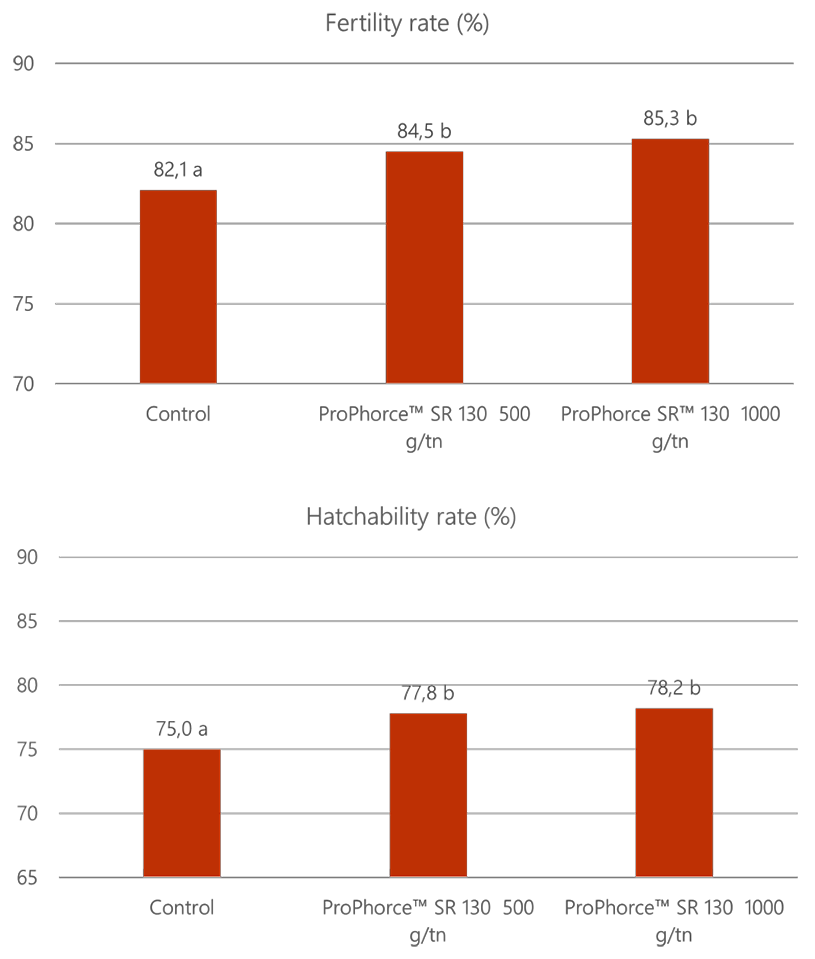Frequently Asked Animal Nutrition Questions 2025 - part 2
Our customer facing colleagues receive a lot of questions from the market. Obviously some more frequently than others.
We have collected 10 of the most relevant and most frequently asked questions for you. We have answered the first 5 a few weeks ago. You can find them in this article>>.
But there was more! Below you can read the answers to 5 more frequently asked questions:
- What is our go-to zinc oxide replacement strategy for piglets?
- What beneficial effects can tributyrins have for sows and their progeny?
- How can I support my layers in the peak period?
- What are the benefits of tributyrins for breeders?
- Can drinking water applications add a safety net for the food chain?
Question 1: What is our go-to zinc oxide replacement strategy for piglets?
A question that we regularly get nowadays is about replacing zinc oxide for piglets. As of June 2022, pharmaceutical levels of zinc oxide (ZnO) at an inclusion level of 3000 ppm are no longer permitted under EU regulation. Pharmaceutical levels of ZnO at high inclusion rates were historically used in piglet diets as nutritional strategies during post weaning for preventing and controlling digestive imbalances in young piglets. With the regulatory landscape changing, many producers are seeking alternative approaches to support piglet development while still maintaining performance under new conditions. It is therefore no surprise that we often receive questions regards nutritional options following the phase out of zinc oxide.
Zinc oxide (ZnO) has been shown to support gut health and integrity by promoting intestinal integrity and reducing the incidence of Escherichia coli associated with post weaning diarrhea (PWD) in piglets. As such it is used therapeutically to help mitigate the negative effects associated with the weaning transition. However, concerns over antimicrobial resistance, environmental pollution and toxicity have led to regulatory restrictions on the use pharmaceutical levels of Zinc Oxide in swine production.
Jumping to today, post-weaning digestive challenges remain a key concern in pig production, with multifactorial origins involving environment, management, sow health, piglet resilience, nutrition, and water quality. One contributing factor can be the presence of enterotoxigenic E. coli (ETEC), which may impact gut functionality and overall performance.
At Perstorp we believe in gut wealth which means healthy gut is a cornerstone when it comes to achieving healthy and optimally performing animals, which translates into improved profitability and peace of mind for you. This approach prioritizes strengthening the gut natural barrier, supporting microbial balance and selecting feed solutions that help pigs through crucial transition periods. By helping to maintain gut integrity and digestive efficiency, nutritional strategies can support consistent growth and better overall outcomes, contributing to improved performance and peace of mind for producers across the value chain.
A good nutritional program that can help overcome the challenges posed during the weaning transition should meet the following objectives:
- Provide optimal quality feed and water
- Enhance beneficial microflora development
- Support gut health and integrity, to aid nutrient absorption
- Helps maintain the piglet’s defense mechanisms
Now that objectives are set, which molecules can be used? Organic acids applied in feed and water are used to support gut environment and digestive processes in piglets. Furthermore, esters of butyric and valeric acid have been studied for their potential to support gut morphology, intestinal integrity, microbiome balance and natural defense regulation during periods of challenge.
To summarize: there is no single product that replaces zinc oxide. It is important to consider what the original functions of zinc oxide served and address those needs.
We’d be happy to sit down with you and discuss what approach might be best suited for your operation. We have developed solutions that are designed for this purpose, but we can also help you pinpoint the areas that you’d like to focus on and advise from there. Get in touch with your sales manager or contact us through LinkedIn if you’d like to know more.

Question 2: What beneficial effects can tributyrins have for sows and their progeny?
The prevention of problems associated with maintaining optimal body condition in sows has historically been one of the critical points in order to maintain optimal performance in pig farms. This problem gets tougher as sows prolificacy and litter size increase. That is why we receive a lot of questions about the effects of tributyrins on sows and their progeny.
Ensuring that sows reach farrowing and weaning with appropriate body condition is an important consideration for maintaining performance continuity. During late gestation and lactation, sows often face high nutritional demands relative to intake capacity. Tributyrins are commonly used in feeding programs during this phase based on their nutritional profile and their established role in standard dietary practices.
In a trial conducted by the Veterinary School of the University of Sao Paulo in 2022, it was observed that sows fed tributyrins from day 35 of gestation. The study recorded data on piglet weight categories at birth, litter weight, and nutrient utilization parameters in lactating sows. Additional observations were made on piglet performance eight days after weaning as seen in table 1. These findings have contributed to ongoing research into feeding strategies during late gestation and lactation phases.

Relevant performance results. Means with different superscripts are significantly different (p <0.05).
These results provide insights for the ongoing research into nutritional strategies during late gestation and lactation. While differences were observed between control and supplemented groups, these findings are part of a broader investigation by Perstorp into how feeding programs can be optimized in pig production systems with the use of tributyrins.
Further details from the 2022 trail conducted by the Veterinary School of the University of Sao Paulo are available here:
https://www.mdpi.com/2306-7381/12/3/260
(These results are part of ongoing academic research and do not constitute authorized claims under EU feed legislation)

Question 3: How can I support my layers in the peak period?
As laying hens approach peak production, they undergo significant physiological changes. Their energy and nutrient requirements rise sharply to support both continued body development and the onset of egg production. To meet these demands, hens must rapidly increase their feed intake. However, if intake does not keep pace, they may enter a state of negative energy balance, risking delays in sexual maturity, poor egg production, and loss of uniformity. Staying close to the genetic target weight is crucial for maintaining optimal egg output and flock uniformity.
Our customers frequently ask us input on how to support their layers during peak period. This phase require careful attention and feeding approached to help maintain consistent production.
Maintaining optimal gut function is important for performance and welfare in layers especially during the peak layering period. Organic acids—such as butyric, formic, valeric and propionic acid in different forms— can play a role in:
- helping to reduce pathogenic pressure through the addition of preservatives that contribute to feed hygiene.
- helping to maintain favorable gut conditions as part of a balanced feeding strategy.
- components that support general feed formulation practices in poultry production.
Another very interesting approach during strategic periods is the use of organic acids via water. Their inclusion is widely used to support feed and water hygiene, as well as to help maintain optimal conditions in the digestive tract.
By strategically combining complementary nutritional strategies from Perstorp’s ProPhorce™ and Gastrivix™ gut health product lines, producers can take a structured approach to support flock performance during peak production. This integrated nutritional planning helps ensure consistent production conditions throughout the laying cycle.

Question 4: What are the benefits of tributyrins for breeders?
In our industry different species or life phases have different requirements. Many questions we receive revolve around what certain solutions can contribute to that specific challenge or species or life phase. Not surprisingly a lot of customers ask us about the role of tributyrins in breeder feeding programs.
Proper gut functionality is the foundation for future performance and production success. For breeders, achieving target body weight and flock uniformity begins in the pullet phase, while in the production phase, the focus shifts to producing high-quality fertile eggs with excellent hatchability to ensure robust day-old chicks (DOC). Eggshell strength and integrity are important considerations, as physical shell characteristics may influence susceptibility to external contamination and affect DOC uniformity.
The intestinal environment plays a key role in supporting the nutritional management of breeder flocks. Tributyrins are used in feed strategies for breeders based on their well-established role as a source of butyric acid, which is recognized for its contribution to digestive processes. By incorporating tributyrin as part of a broader feeding program, producers aim to maintain consistent digestive conditions that support nutrient utilization throughout the production cycle.
Numerous studies in broiler breeders have demonstrated that tributyrin supplementation leads to:
- observed changes in eggshell quality, including thickness and porosity when included in feed formulations.
- numerical differences in Haugh units, reflecting variations in egg albumen quality.
- reported outcomes in fertility and hatchability as part of broader studies into performance.

Decades of research have proven the benefits of esters of butyric acid on gut health and performance.

Tributyrin, the main ingredient in ProPhorce™ SR 130, is used in feed programs focused on maintaining digestive function. It has been studied in the context of nutritional strategies aiming to support consistent breeder outcomes, including DOC.
Question 5: Can drinking water applications add a safety net for the food chain?
Pathogen control in animal production systems requires a comprehensive approach, and drinking water applications can be part of this strategy, particularly in relation to managing zoonotic bacteria like Salmonella. While certain Salmonella strains may not directly impact poultry health they are recognized as relevant from a food safety perspective.
Effective control measures, like the use of water products during the first 14 days or close to slaughter, may help reduce bacterial load and limit transfer into the processing chain.
We often receive questions about the role of such applications in supporting hygiene management. While not a substitute for primary prevention measures, water treatments have demonstrated potential value as part of an integrated control program, as shown in a practical case study from the US.
Case Study: Practical Testing in the U.S.
In one example, a poultry integrator in the Midwest faced rising Salmonella levels, struggling to meet FSIS standards which require less than 9.8% Salmonella-positive carcasses. The integrator evaluated ProPhorce™ Exclusive, an organic acid-based (free and esterified) liquid formulation with phytogenic compounds, alongside their existing sodium bisulphate treatment as part of their hygiene management.
Initially, they applied ProPhorce™ Exclusive into their water 48 hours before slaughter, later extending it to 72 hours. Over a 2 month period of using ProPhorce™ Exclusive, they saw Salmonella-positive rates drop below 8%. However, after reverting back to sodium bisulphate for two months, levels rose above 18% again.
A subsequent return to ProPhorce™ Exclusive for another two months showed reduced salmonella detection rates again. During the final four-month test average Salmonella rates were approximately 4.97%, indicting a further decrease compared to prior measurements.
Today, ProPhorce™ Exclusive remains part of their pathogen control program, showing the potential role of water-based interventions as part of integrated hygiene strategies.
Read more here>>
Wrapping up
Wow you have made it through all 5 or maybe even 10 of these frequently asked questions! Consider us impressed. Still haven't had enough? You can continue reading the series of FAQ's we did in 2023 here>> Maybe we'll see you back here for more frequently asked goodness in 2027.